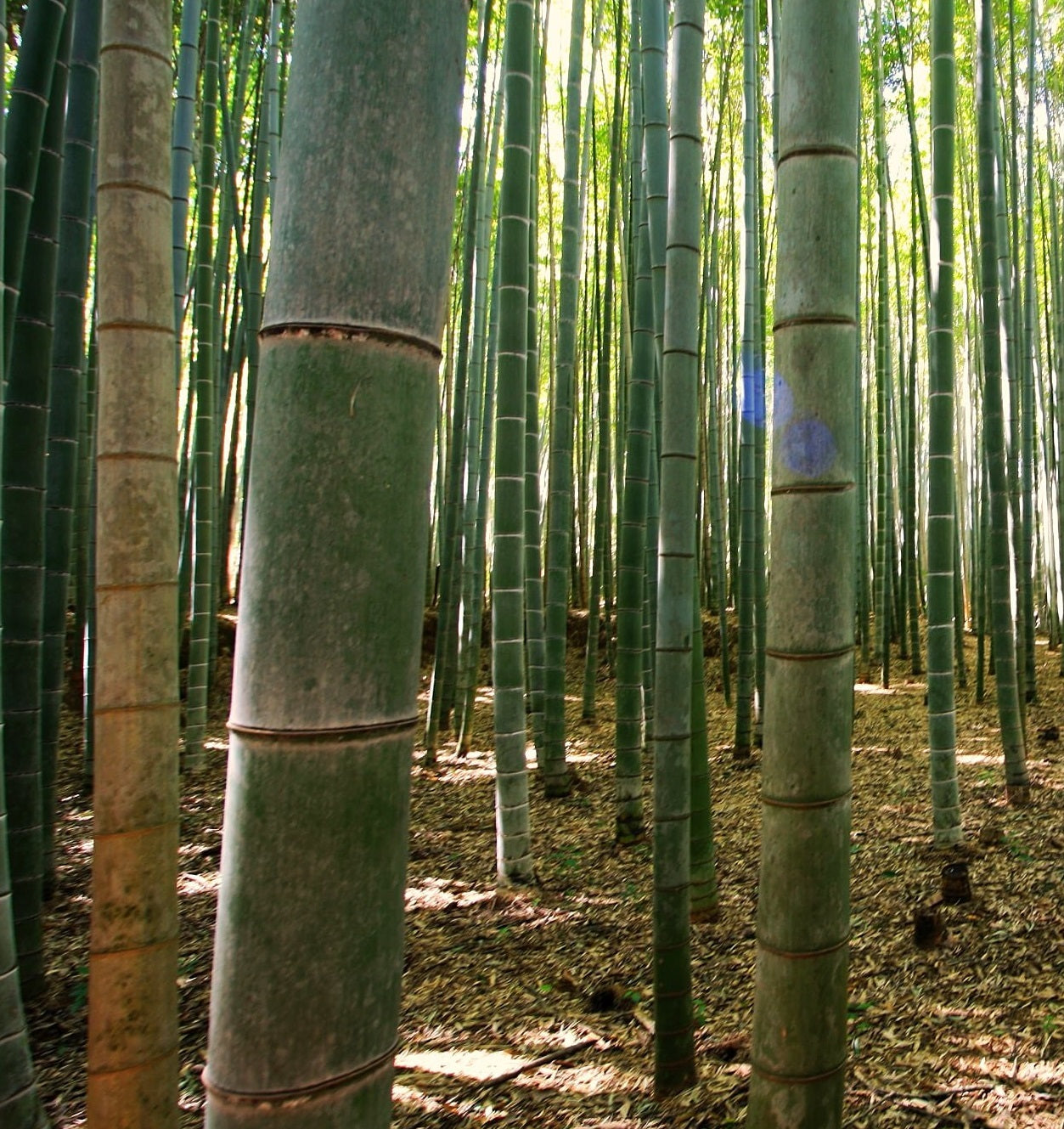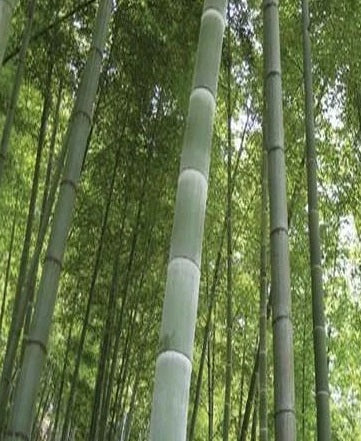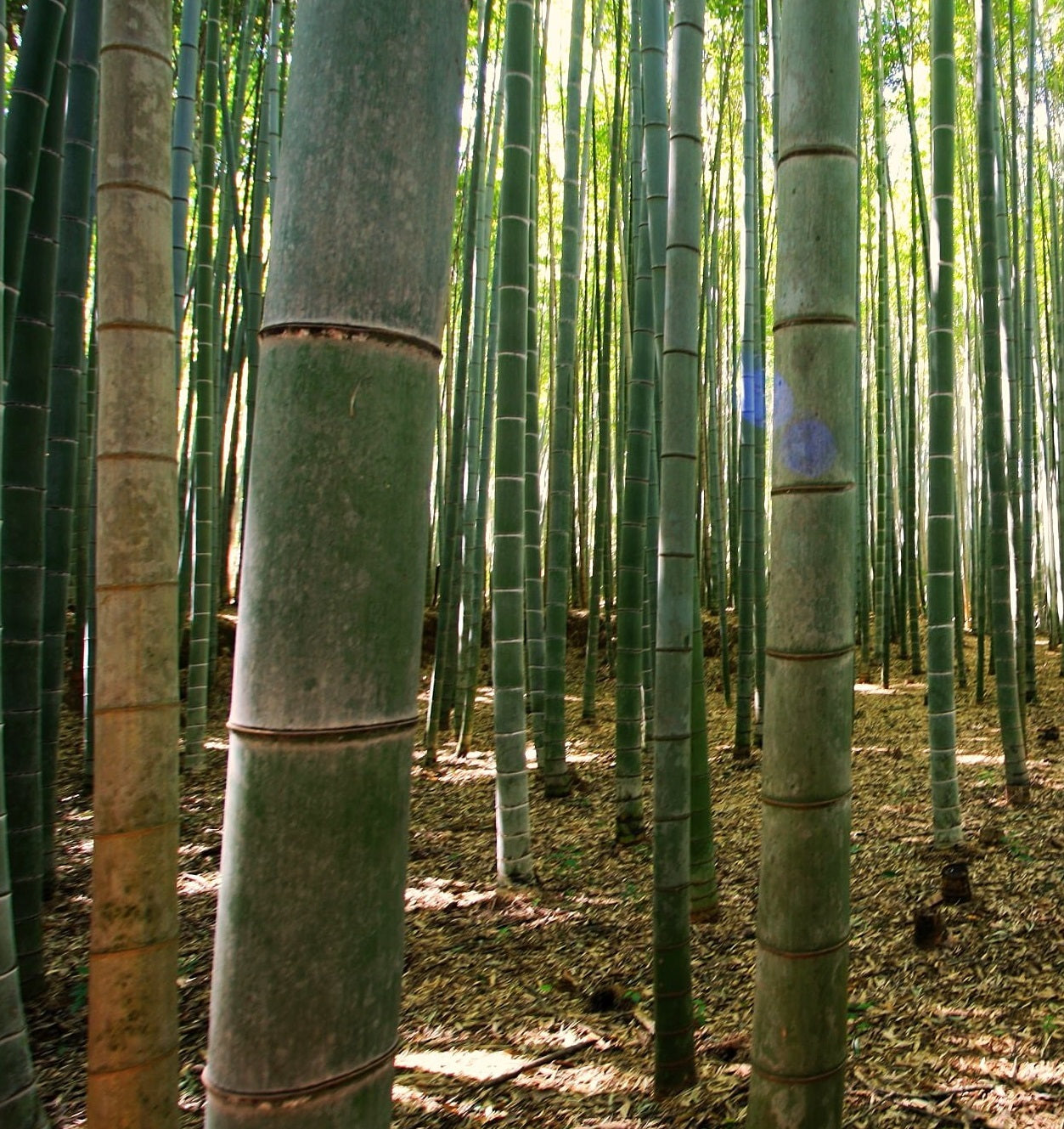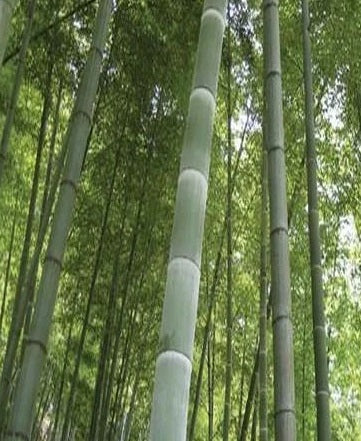Bamboo Seed Shop
Phyllostachys pubescens Moso Bamboo Seeds
Phyllostachys pubescens Moso Bamboo Seeds
Couldn't load pickup availability
Phyllostachys edulis Moso Bamboo Seeds for Sale
- Available in 100, 500, and 1000 bamboo seed counts
- Giant
- Running
- Temperate; Hardy to -17C
- Height 10-15 meters
- Germination 72%
About Fast Growing Moso Bamboo from Seed
Phyllostachys edulis, commonly known as Moso bamboo, is a large, fast-growing species of bamboo native to China and Taiwan. It is one of the most economically important bamboo species and is widely cultivated for various purposes. Here are some key characteristics of Phyllostachys edulis Moso bamboo:
Size and Growth: Moso bamboo is known for its impressive size. It can reach heights of up to 20-30 meters (65-98 feet) and has a thick, sturdy culm (stem) with a diameter of 10-20 centimeters (4-8 inches). The culms grow rapidly, with an average annual growth rate of 20-30 centimeters (8-12 inches).
Appearance: The culms of Moso bamboo have a distinctive green color when young, which gradually matures into a yellowish-brown hue as they age. The culms are smooth and have prominent nodes along their length, where branches emerge. The leaves are lance-shaped and dark green, creating a dense canopy when the plant is fully grown.
Rhizome System: Like other bamboo species, Moso bamboo grows from an underground rhizome system. The rhizomes are long and branching, allowing the bamboo to spread and form extensive colonies over time. This growth habit makes Moso bamboo an excellent choice for erosion control and reforestation projects.
Growth Habit: Moso bamboo is a clumping bamboo, meaning it forms dense clusters or groves of culms rather than spreading in a running manner like some other bamboo species. The clumps can expand over time, but they remain relatively contained, making it easier to manage and control the spread of Moso bamboo.
Growth Conditions: Moso bamboo prefers warm temperate and subtropical climates. It thrives in areas with an average annual temperature range of 10-30°C (50-86°F). It requires well-drained soil and ample sunlight for optimal growth. Moso bamboo is also known to be tolerant of a wide range of soil types, including sandy, loamy, and clay soils.
Utilization: Moso bamboo has numerous practical applications. The culms are widely used for construction purposes, including building materials, furniture, flooring, and even paper production. The shoots (young culms) are edible and are a popular ingredient in Asian cuisine. Moso bamboo is also used in the production of textiles, handicrafts, and various eco-friendly products.
Sustainability: Moso bamboo is highly regarded for its sustainability. It is one of the fastest-growing plants on Earth, with the ability to reach full maturity in 5-6 years. Its extensive root system helps prevent soil erosion and promotes carbon sequestration, making it an environmentally friendly choice. Additionally, Moso bamboo can be harvested without killing the plant, as new shoots will continue to emerge from the rhizomes.
It's important to note that the characteristics of Phyllostachys edulis Moso bamboo grown from seed may vary slightly depending on the specific growing conditions and geographic location.
History and Cultural Significance of Giant Moso from Phylllostachys edulis Bamboo Seeds
Moso bamboo (Phyllostachys edulis) is a large and majestic species of bamboo that belongs to the Poaceae family. It is native to China and is primarily found in the provinces of Zhejiang, Fujian, and Jiangxi. Moso bamboo is known for its impressive size, rapid growth, and versatility, making it a significant natural resource with both ecological and cultural importance.
Natural History:
Moso bamboo is the largest bamboo species and can reach impressive heights of up to 20-30 meters (66-98 feet) with a diameter of 15-20 centimeters (6-8 inches). Its thick culms (stems) are green and initially covered with a grayish-blue waxy coating. As the bamboo matures, the culms turn golden-yellow, providing a beautiful aesthetic appeal. The plant's leaves are slender and lance-shaped.
One of the most remarkable aspects of Moso bamboo is its rapid growth. During the growing season, which typically lasts from April to September, it can grow at an astonishing rate of up to 1 meter (3 feet) per day under favorable conditions. This growth rate, combined with its height, makes Moso bamboo one of the fastest-growing plants on Earth.
Cultural Importance of Giant Moso Bamboo
Moso bamboo has immense cultural importance, particularly in China and other East Asian countries. Here are some key aspects of its cultural significance:
Economic Value: Moso bamboo is highly valued for its versatile usage in various industries. Its strong and flexible culms are used for construction, furniture, flooring, and even in the production of textiles, paper, and musical instruments. The shoots of Moso bamboo are also harvested as a food source.
Traditional Craftsmanship: Bamboo has a long history of use in traditional craftsmanship. Skilled artisans use Moso bamboo to create intricate and beautiful items such as baskets, mats, utensils, and artwork. These crafts often embody the cultural heritage and artistic traditions of the local communities.
Symbolic Significance: Bamboo holds symbolic importance in East Asian cultures, including China, Japan, and Korea. It is associated with qualities such as resilience, strength, and flexibility, which are highly admired traits in these societies. Bamboo motifs frequently appear in art, literature, and architecture, symbolizing endurance, growth, and longevity.
Environmental Benefits: Moso bamboo plays a vital role in the environment. Its dense root system helps prevent soil erosion and stabilizes slopes, making it valuable in reforestation efforts. Bamboo forests, including Moso bamboo, also act as carbon sinks, absorbing significant amounts of carbon dioxide and contributing to the mitigation of climate change.
Ecotourism: The impressive size and beauty of Moso bamboo forests attract tourists and nature enthusiasts. Many regions with extensive bamboo forests, such as Anji County in Zhejiang Province, have developed ecotourism initiatives centered around bamboo, providing visitors with educational and recreational experiences.
Overall, Moso bamboo combines natural grandeur, ecological significance, and cultural importance. Its rapid growth, economic value, and deep-rooted cultural associations make it a cherished and celebrated plant in East Asia.
Planting Moso Bamboo Seeds
Moso bamboo (Phyllostachys edulis) is known for its large size and rapid growth, and it is a highly valued bamboo species. Like many seeds, growing Moso bamboo from seeds can be challenging for the novice gardener. Moso bamboo seeds have specific germination requirements that need to be fulfilled for successful sprouting, including but not limited to consistent moisture, light, and temperature. The germination success rate of Moso bamboo seeds can be variable, depending on one's experience, growing conditions, and germination process. While most seeds may successfully germinate, some may not sprout at all. The gardener experienced with seed germination understands that there is rarely a 100% germination rate, and Moso bamboo seeds are no exception.
Moso bamboo seeds can have a long germination period, typically ranging from several weeks to several months. Patience is required when growing Moso bamboo from seeds, as it may take time for the seeds to sprout and establish. Once Moso bamboo seeds successfully germinate, the initial growth of seedlings can be slow. It takes time for the bamboo plants to develop their roots and establish themselves before they exhibit the rapid growth characteristic of mature Moso bamboo.
Once you have successfully germinated, planted, and cared for your Moso Bamboo seeds to maturity, you will be able to propagate your Moso Bamboo via rhizome cuttings. This allows for the production of genetically identical clones of your original Moso Bamboo grown from seed.
It's important to research and understand the specific germination requirements and techniques for this species. Following proper seed preparation, stratification, and germination methods, along with providing appropriate care and growing conditions, will maximize your successful seed sprouting. Consulting with experienced bamboo growers or horticultural experts who have specific knowledge of Moso bamboo cultivation can provide valuable guidance tailored to this particular species.
Share



